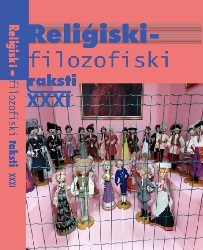Central Anti-Religious Museum in Moscow: From Anti-Religious Propaganda to the Study of Religion
Central Anti-Religious Museum in Moscow: From Anti-Religious Propaganda to the Study of Religion
Author(s): Ekaterina A. TeryukovaSubject(s): Museology & Heritage Studies, Politics and religion, Interwar Period (1920 - 1939), WW II and following years (1940 - 1949), History of Communism, Sociology of Religion
Published by: Latvijas Universitātes Filozofijas un socioloģijas institūts
Keywords: anti-religious propaganda; study of religion; atheism; museums;
Summary/Abstract: The paper examines the Central Anti-Religious Museum (CAM) in Moscow in 1926-1947 and its activities on the anti-religious propaganda and the study of religion. It was was established by a resolution of the Central Committee of the Russian Communist Party (VKPb) and became the first anti-religious museum in the USSR. Being recognized as a Research Institution of National Importance by the Council of People’s Commissars in 1934 the Museum performed a variety of important functions on aggregating data about provincial museums, developing guidelines on methodology of anti-religious museum work, organizing field works and study of religious practices of the USSR ethnic groups. As a result, by the late 1930s, the Museum developed from anti-religious propaganda establishment into research center and was renamed the Central Museum of the History of Religion and Atheism on 20 February 1942.
Journal: Religiski-filozofiski raksti
- Issue Year: XXXI/2021
- Issue No: 3
- Page Range: 45-68
- Page Count: 24
- Language: English

